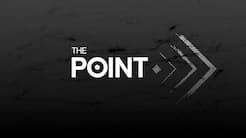That movie was a public relations disaster for sharks, relegating these magnificent creatures to the maxim that all sharks are dangerous and that the only good shark is a dead shark.
But could it be possible that our fear of sharks is a construct of Hollywood? That a misunderstanding of sharks, exported from western cultures, undermines the important role sharks play in the marine ecosystem?
Indigenous societies have a deeper understanding and appreciation for sharks.
Many Indigenous coastal communities in Australia place huge importance on the shark. They consider the shark a mystical creature, the subject of many creation stories. But what connects all these stories is how they illustrate the importance of sharks within the marine ecosystems and also how humans and the shark have evolved side by side..
The traditional story of Mäna from the Yolngu people in Arnhem Land tells the tale of the shark as an ancestral being, which began its journey along the coast of northeast Arnhem Land. Mäna was speared by an ancestor from another clan who did not want other creator beings near him. Mäna was furious and the creature charged into the land,gouging his way inland using his teeth to carve out river systems. As Mäna journeyed onward, his teeth broke off on the hard riverbanks; these lost teeth became the pandanus trees which line rivers today. The leaves of these trees are dagger-shaped with serrated edges, like shark teeth. The trees represent both Mäna’s anger at being speared and the stingray-spine tipped spear that Mäna carried to avenge his death.
This ancestral story explains why modern whaler sharks are dangerous and why some sharks still enter freshwater. Modern sharks still harbour anger at being ambushed during the creation times. Yet the rage is not necessarily negative; Mäna represents justified vengeance, the strength to overcome obstacles and avenge injustice.
Just about every coastal community in Australia has traditional words for different types of sharks - evidence that the sharks are regarded most highly in these communities, worthy of protection, particularly as part of the marine ecosystems.
Otis Carey, one of Australia prominent Indigenous surfers, says his encounter with a great white shark while surfing was a result of commercial fishers. “I have had many encounters with sharks,” he told NITV.
“I have had many encounters with sharks,” he told NITV.

“I distinctly remember the encounter with the great white sharks while surfing. I’m not fussed by them at all and never even talked about it.
“The main issue I feel for sharks are that the commercial trawlers who are forcing the sharks to search for food closer to the shore.”
The impact of mainstream surf culture on sharks.
Surfing culture has long been a popular one in mainstream Australia, but now Indigenous surfers are also making waves. People like Otis Carey are creating opportunities to embrace the sport and connect with people of Indigenous backgrounds.
For many years surf culture was a construct of Hollywood and the mainstream American music Industry.
During the 60s and 70s, surf culture was made popular by movies like Blue Hawaii staring Elvis Presley and music from bands like The Beach Boys with Surfin’ Safari and Surfin’ USA. It is these western influences that have shaped surf culture as we know it today. But little is known of the real origins of surf culture.
But little is known of the real origins of surf culture.

Surfing has been a traditional practice for Polynesians dating back centuries. It wasn’t considered a sport so much as it was was a sacred cultural activity for the Polynesians who invested the idea. Kahalu’u Bay in Hawaii was the site of an ancient surfing temple. Little is known about the traditional of he 'e nalu which roughly translates to 'surfing’. Hollywood has a lot to do with this as well.
In Australia, surfing is considered an important economic opportunity. With our iconic beaches and giant swells, Australian shorelines are considered some of the top locations for surfers across the globe. But in recent years Australia’s most popular beaches have seen shark attacks and community uproar in West Australia led to the state government there announcing measures that it said would increase safety for swimmers and surfers – including the culling of sharks. Since then, the issue of shark attacks and how they can be prevented, has been the subject of hot debate both in communities and the wider surfing movement.
The reality is that if Australia continues to embrace coastal living and surf culture, humans will always encounter sharks. But what can we do to live side-by-side with these great creatures of the sea?. Perhaps the respect and appreciation that Indigenous Australians traditionally have for sharks is a starting point. If we can export this vital knowledge and understanding, we would all be the beneficiaries - sharks, the marine ecosystem and us.

